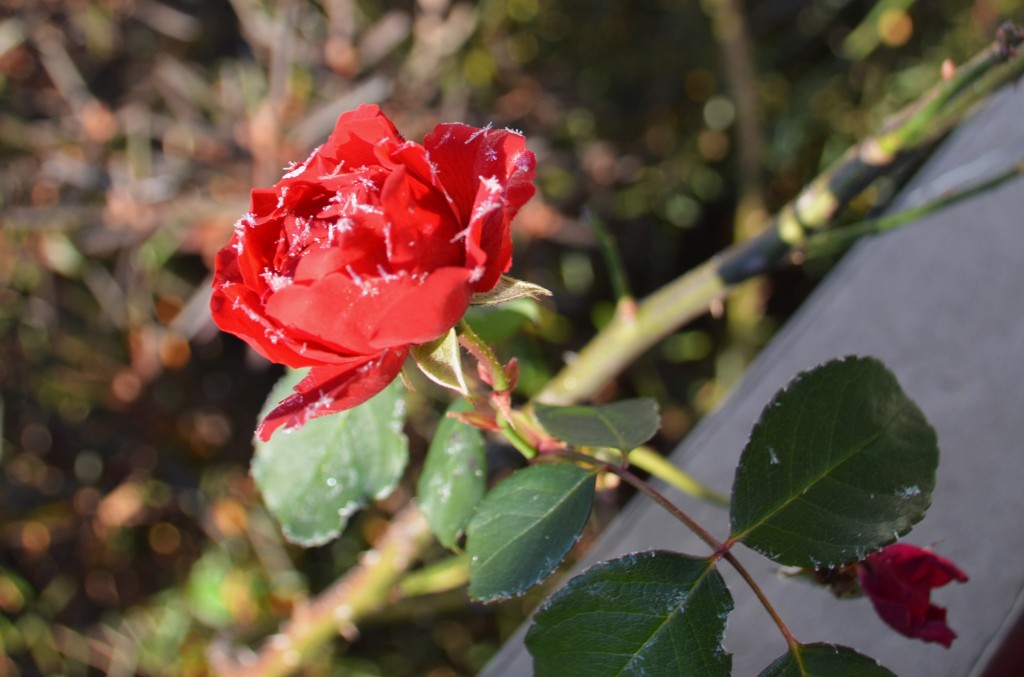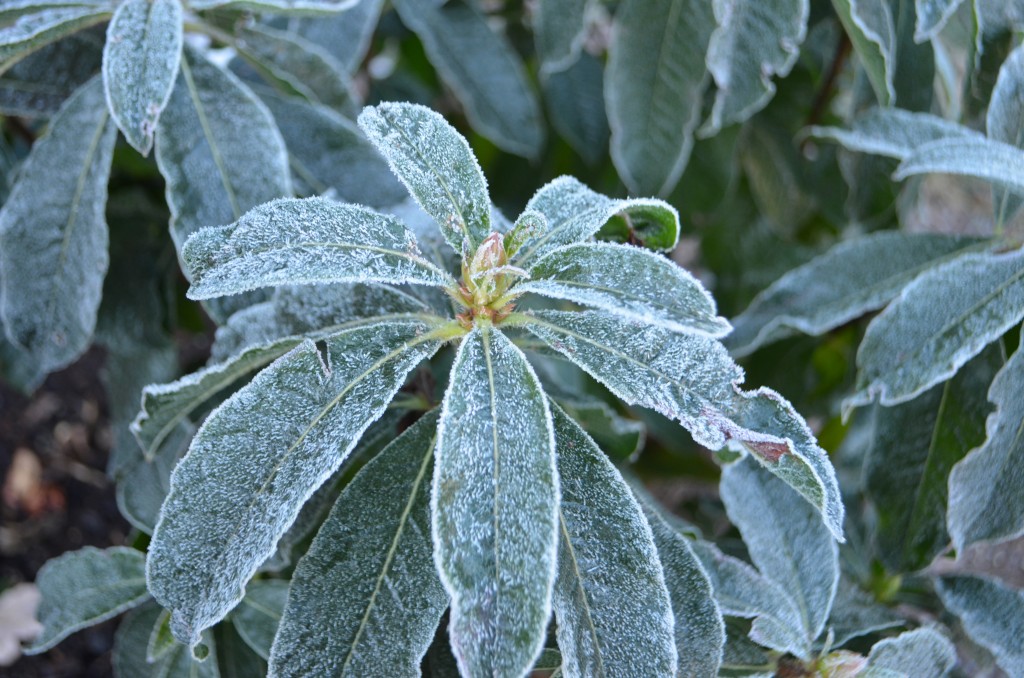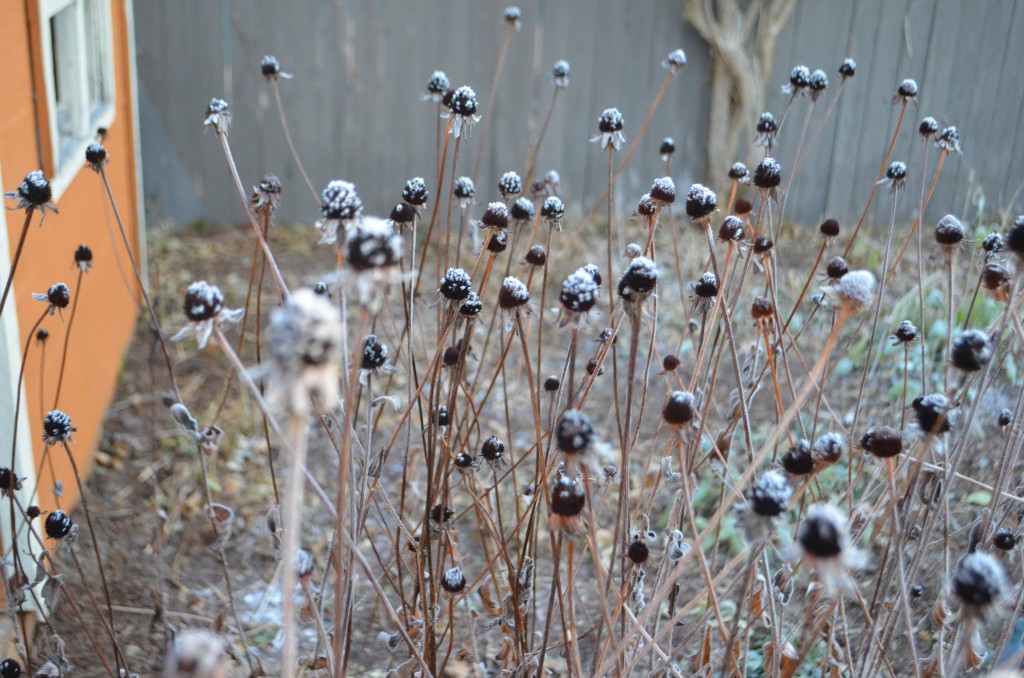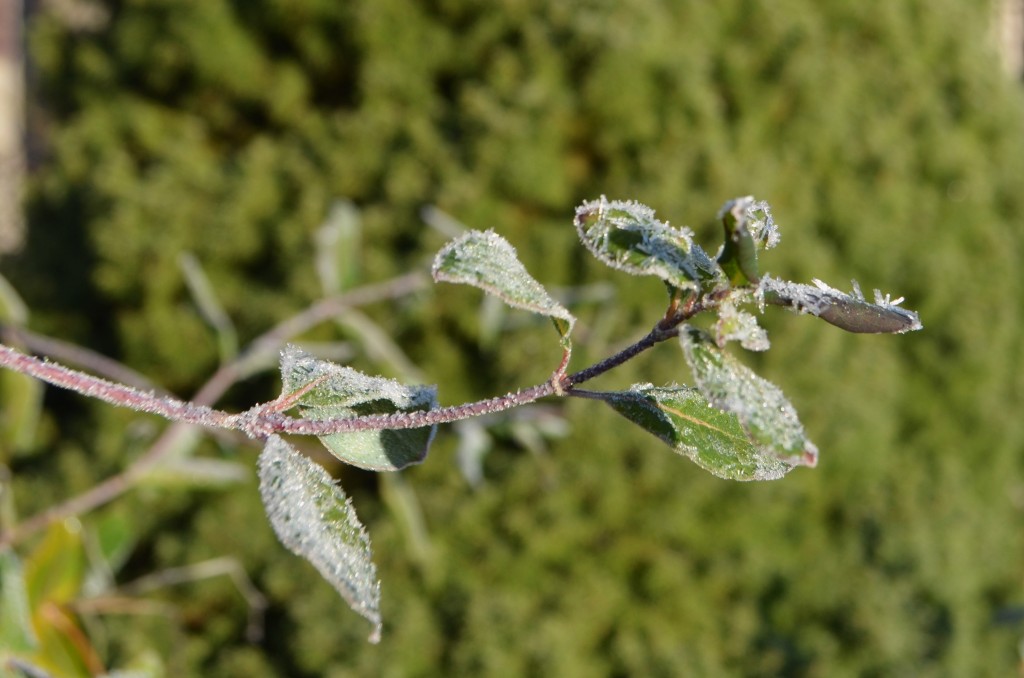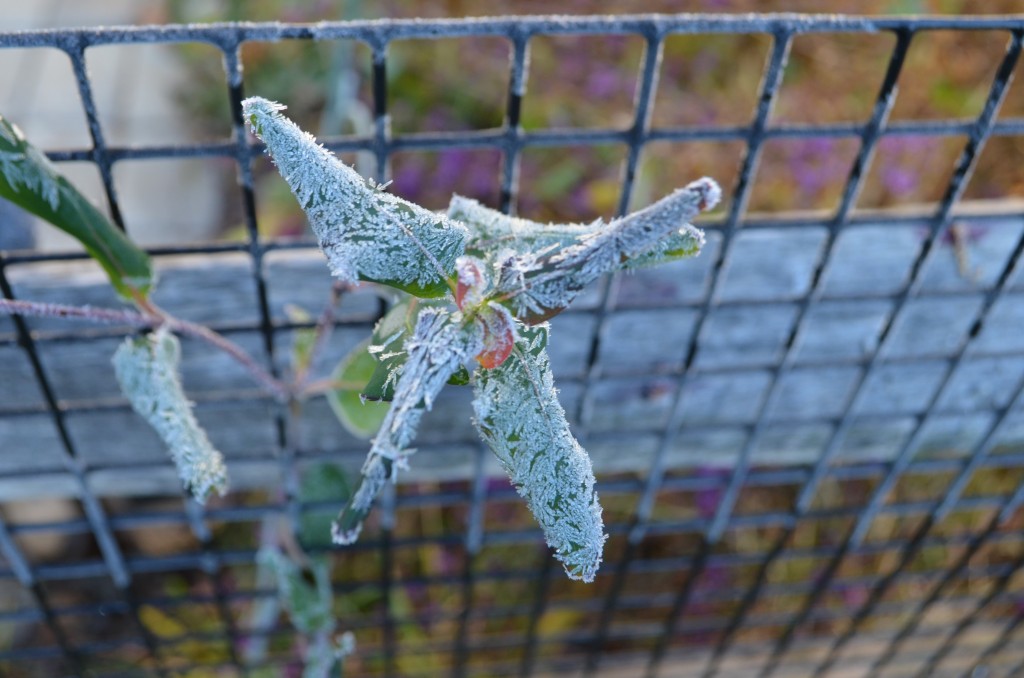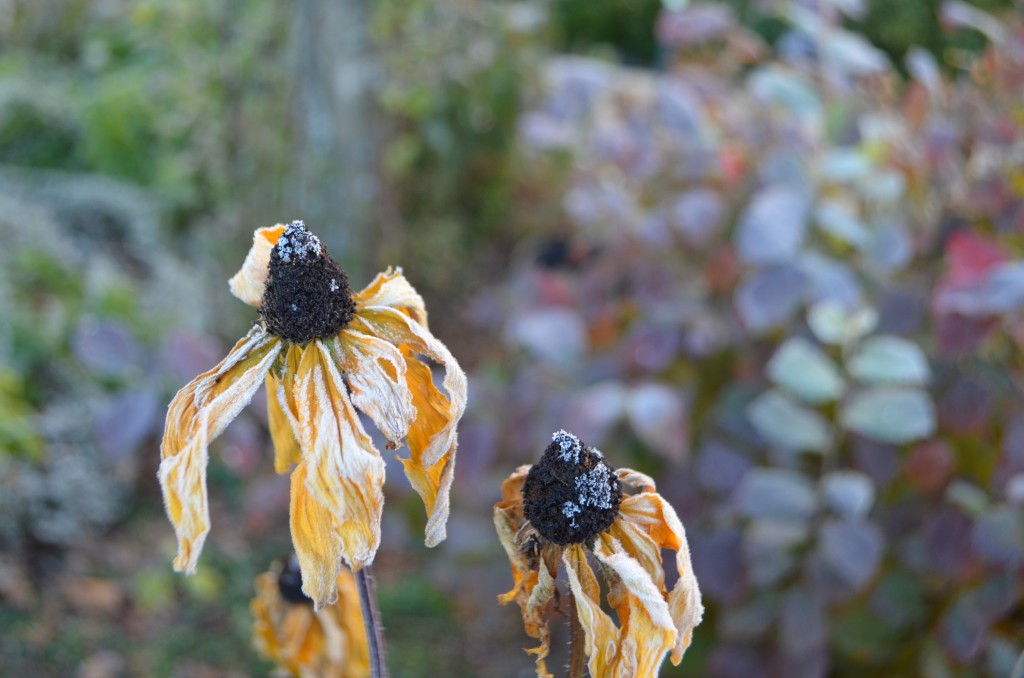This week brought us here in central MA our first series of really cold nights and accompanying frost. Did you know there is more than one kind of frost?
Do you know how to tell if any of them are coming your way?
Let’s start with a definition; frost is really just referring to the sudden onset of freezing temperatures in your garden. These temps may be only brief and temporary, but they will damage your plants. I am no meteorologist and this will be a very non-science-y (read “simplified” ) discussion, but in a nutshell…
Black frost is when the air temperature is below freezing but moisture remains in the air instead of condensing on the leaves therefore no ice forms on the plants but the freezing temperatures damage the cell structure of the plants and they turn black. You wake up and think you escaped unscathed when you see no tell tale white coating, but later in the day most foliage of tender plants is mushy and black.
Frozen dew is when water vapor in the air forms droplets on the plants. As the temperatures plummet, the droplets will freeze into ice , also causing the plant to suffer and blacken.
Hoarfrost or white frost is the pretty one. My wise guy hubby calls it frost for money because he is childish and prone to fits of off color humor. During a white frost the dew point temp. is below 32F and the temperature drops below 32 and reaches the dew point. Water vapor in the air is transformed into ice which forms on the plants as crystals and can be breathtakingly beautiful. Hoarfrost on flowers and leaves that have not yet been blackened is stunning.
This kind of frost is also seen as good ole Jacks’ calling card on your windows and frequently makes me late when I forget to allot time to scrape the car.
Frost occurs either from radiational cooling -meaning the earth cools below freezing at night after the warming sun sets and the cold ground temperatures cause what is usually a mild frost (the kind you can cover plants with sheets and buckets like a crazy person and have them survive) or from a really cold (like polar cold) air mass moving in to your area which will cause advection or killing frost ( in which all tender foliage shall be blackened and die. The end).
Frost is also dependent on relative humidity, as well as the microclimates in your particular yard, large bodies of water in proximity, which season it is occurring in ,and soil temperatures.
So what’s a gardener to do? Well, you could get sling psychrometer to help you measure relative humidity, follow the weather and make frost forecasting charts based on temperatures drops, invest in an expensive home weather station, or do what I do which is sign up at a weather service .com (I use AccuWeather) for weather alerts in your area. I have my alerts sent to my email address, but most sites now have phone apps as well. Then when you see a frost warning in your area, assume you are going to be hit and act accordingly. Frost predicting is a very inexact science because so many variables affect it , so you may get hit and the next town or even a few streets away will not. Also you can watch your own yard through a few frosty and/ or very cold nights and see which areas get hit first and which seem to hold out longer. Cold air runs downhill so areas that are low in your yard will be affected first. Know them, and don’t plant your veggies in them.
I always protect my annuals through the first several light frosts and can thus keep them going usually into very late October or early November.
Be aware though that once you have been “frosted” in the fall, the warnings stop as the weather people figure you are smart enough to know that after the first one , you are now going to see many and should be prepared.
Another good, if very general bit of info is that very humid air is less apt to have a frost than very dry air. sometimes you can tell that one by just standing outside, no sling psychrometer needed.
Anyway enough of that, around here Hoarfrost is an exciting event. So many plants look just stunning covered in frosty ice crystals, and hoarfrosts are much more infrequent than black frosts , so picture taking ensues.Here are some I took this week after our first advection, or killing, frost